Fedir Tetyanych, "Sketch for Architectural and Artistic Design of Kyiv Planetarium (Fragment of the City of Future)" (diptych), 1988, cardboard, gouache, wooden frame each: 60x80 cm 63x85x1 cm (framed). Courtesy of Croy Nielsen, Vienna and the artist's family.
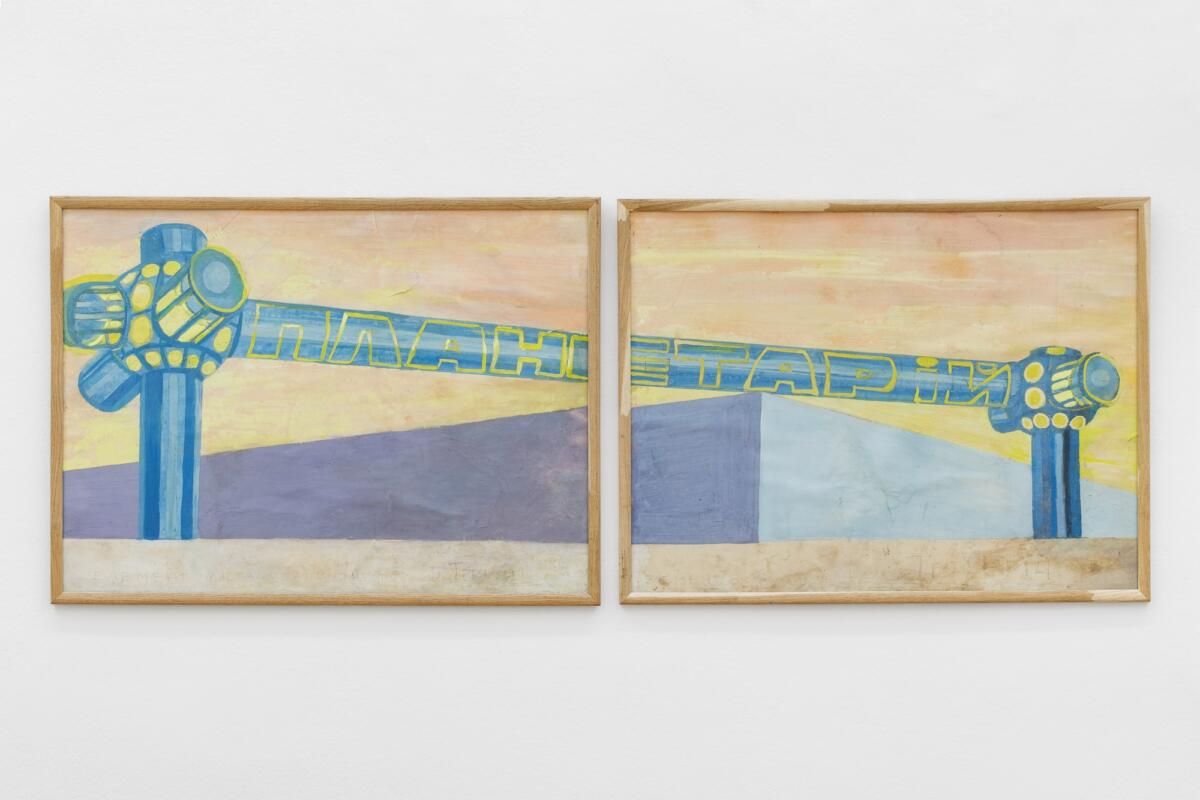
Fedir Tetyanych, "Sketch for Architectural and Artistic Design of Kyiv Planetarium (Fragment of the City of Future)" (diptych), 1988, cardboard, gouache, wooden frame each: 60x80 cm 63x85x1 cm (framed). Courtesy of Croy Nielsen, Vienna and the artist's family.
Fedir Tetyanych (1942–2007) grew up during World War II in the village of Kniazhychi near Kyiv. There, through his early contact with land and nature, and against the backdrop of the armed conflict (as a child he was injured by a piece of a projectile), his idiosyncratic perception of rural cosmism and human responsibility for the surrounding world took form.
As an artist, Tetyanych worked against the constraints of various ideologies and disciplines. He was an author of monumentalist mosaics and decorative panels in the Soviet era, a chronicler of Ukrainian indigenous cosmologies and Cossacks’ anarchist history, a joyous performer, writer of cosmist and ecological manifestos, egalitarian hoarder of objects and an activist who wished to turn landfill sites and factories into theatres. All these labels apply yet collectively fail to encompass Tetyanych’s nonconformist legacy and prolific output.
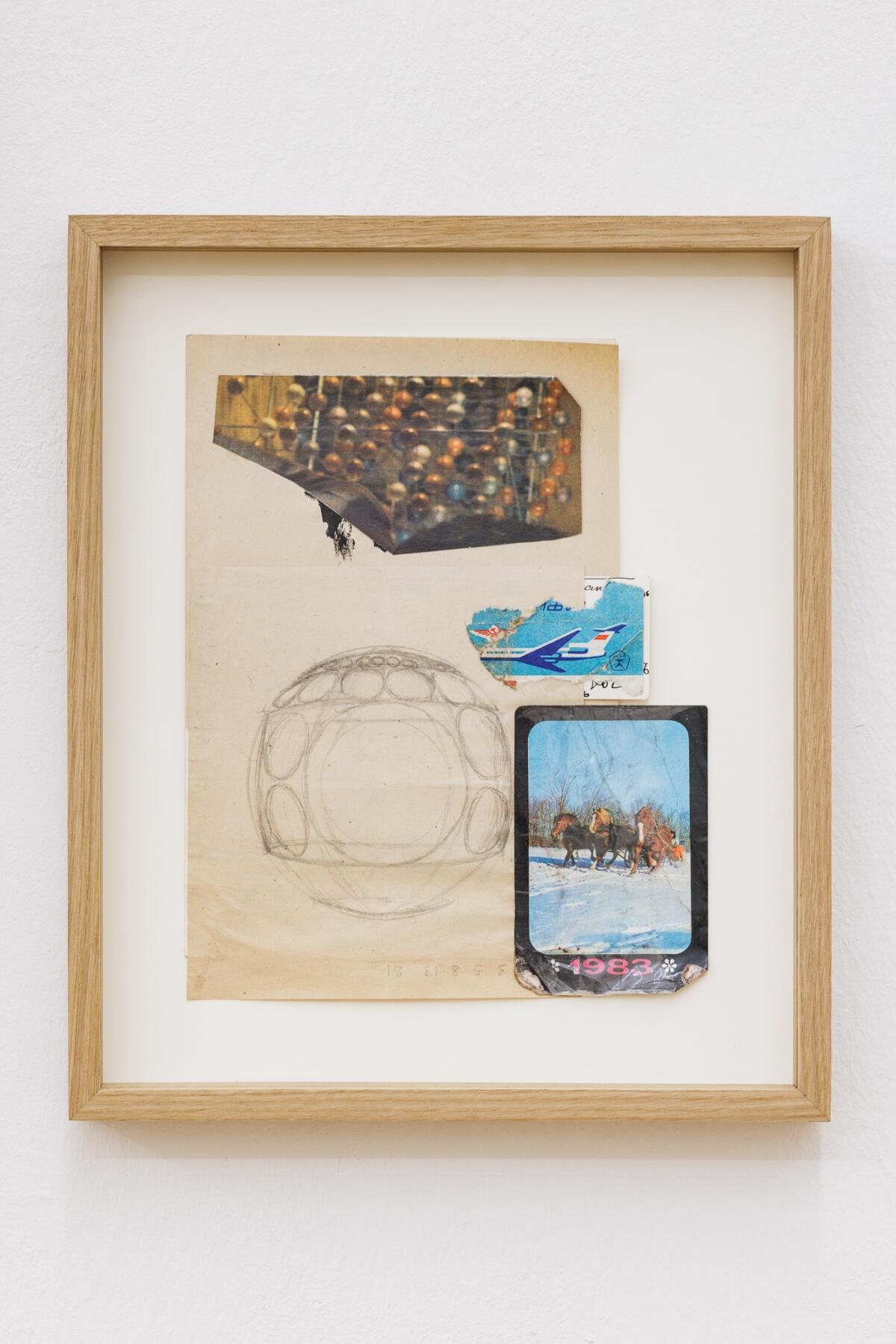
Fedir Tetyanych,
"A Compartment Jumped out of Train...", 1980s
(Collage-book with a Biotechnosphere),
paper, pencil, ink, collage with polygraphic clippings, wooden frame
20 x 16 cm
27.5 x 23 x 3 cm (framed).
Courtesy of Croy Nielsen, Vienna and the artist's family.
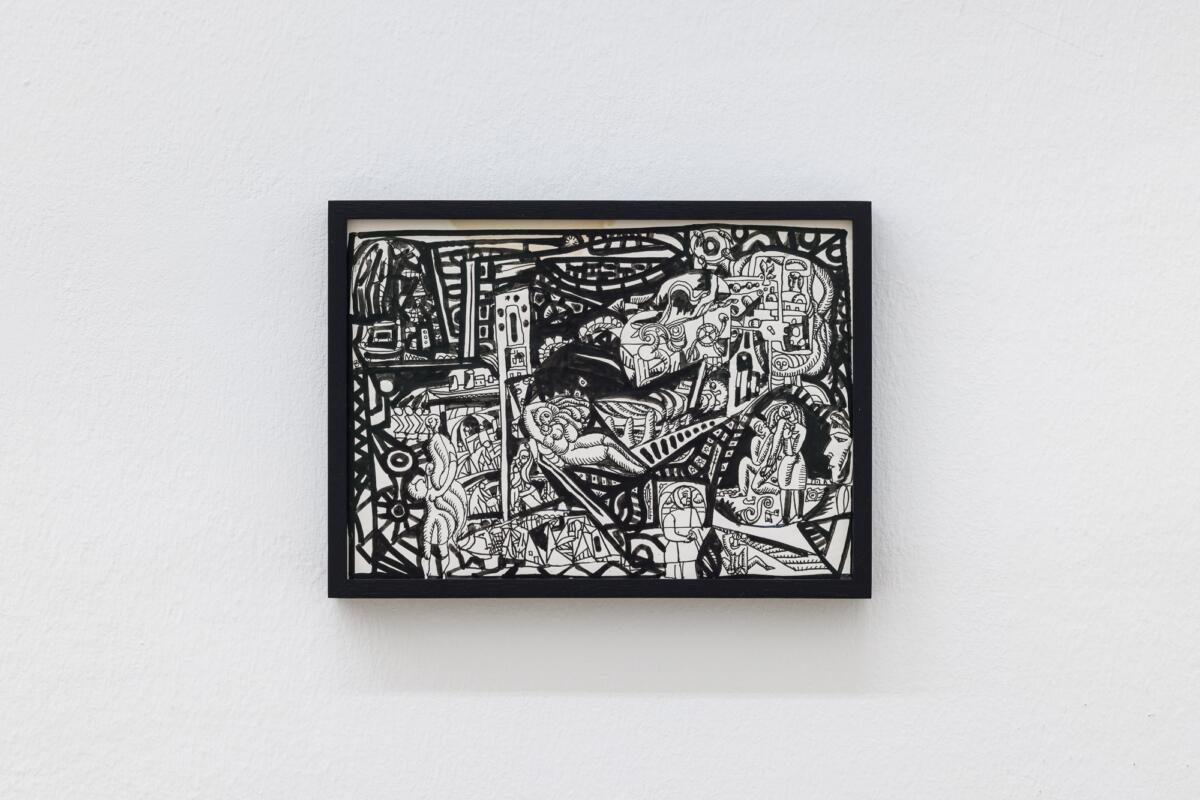
Fedir Tetyanych, "Confrontation of the Primal Forces", 1970s, (Mysteries of Ukrainian Eden), paper, ink, pen, wooden frame 19 x 27 cm 20.5 x 28 x 3 cm (framed). Courtesy of Croy Nielsen, Vienna and the artist's family.
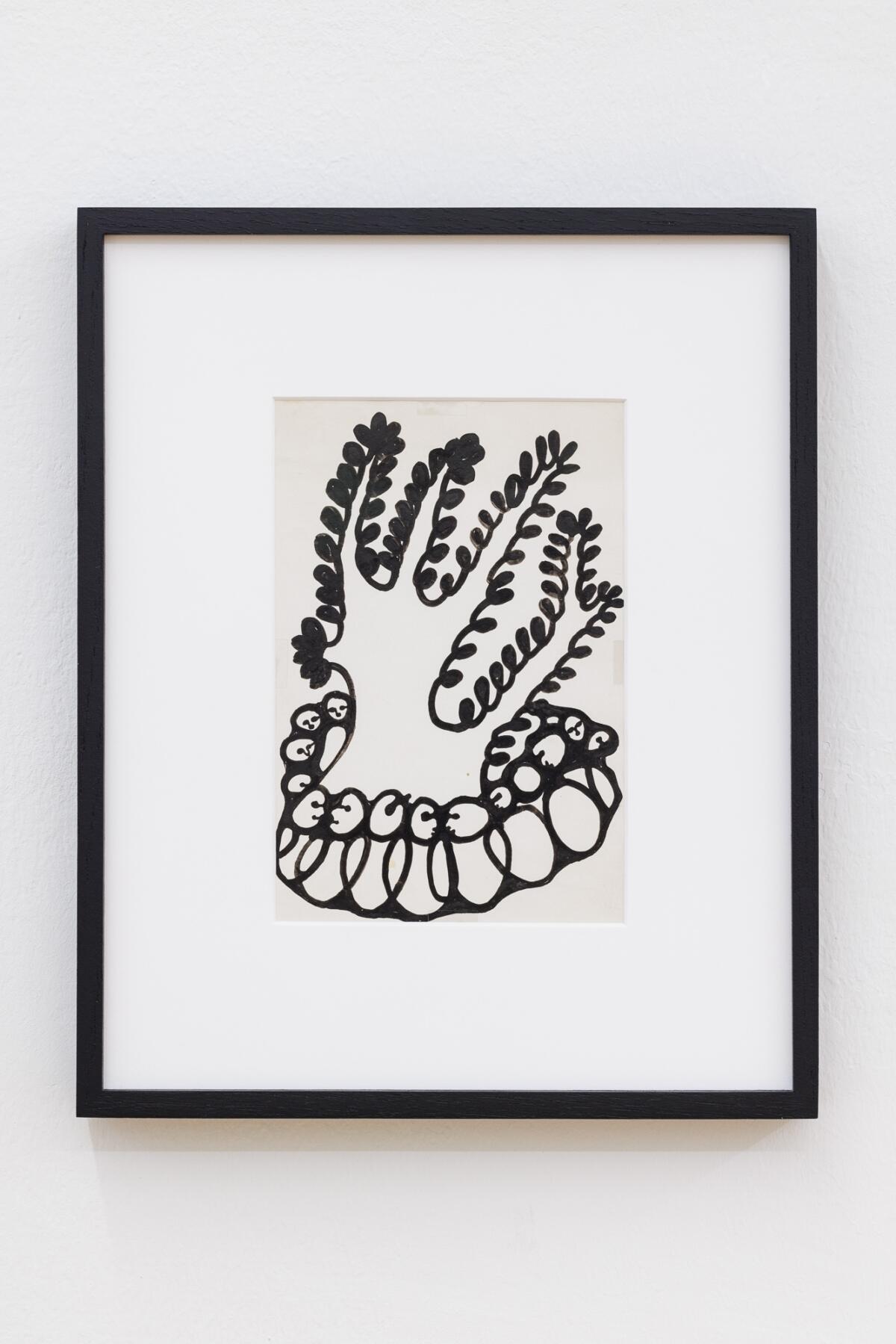
Fedir Tetyanych, "Family Tree", 1970s, ink on paper, wooden frame 18 x 12 cm 32 x 26 x 3 cm (framed). Courtesy of Croy Nielsen, Vienna, the artist's family and collection of the Museum of Modern Art, Warsaw.
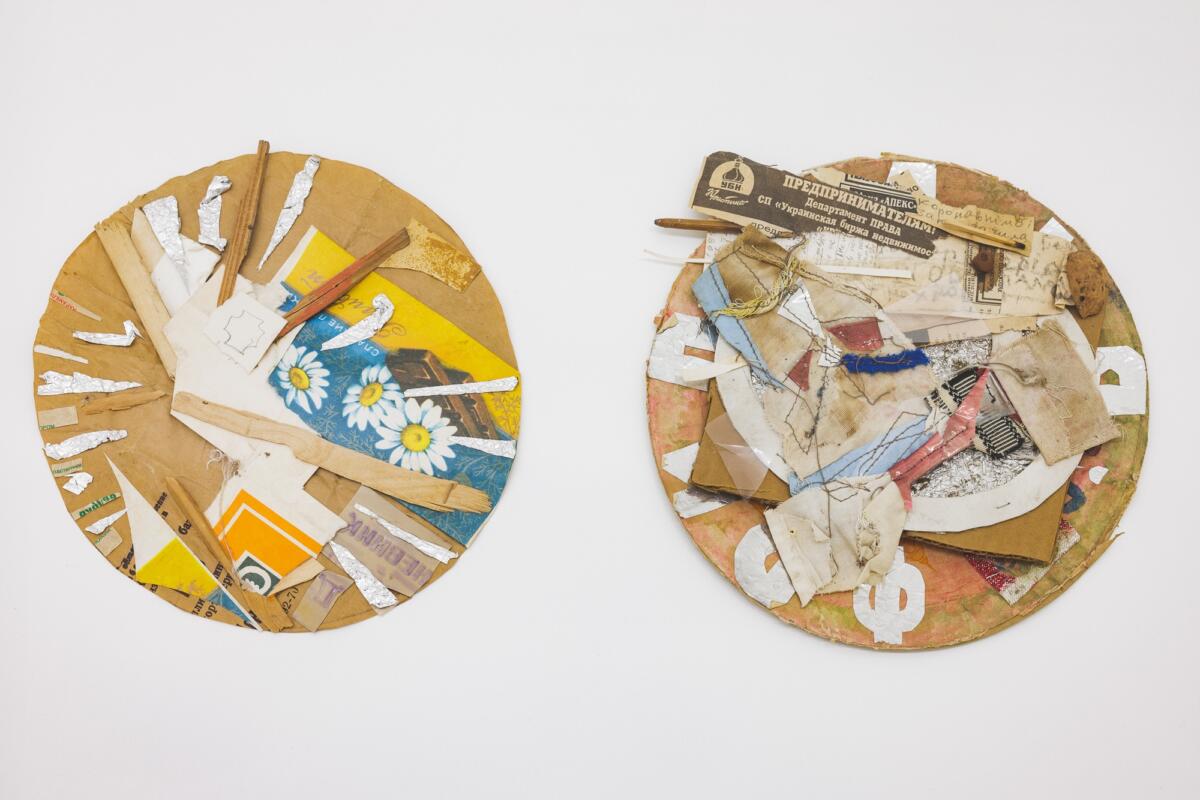
Fedir Tetyanych, "Halo-Crown", 1990s, collage of various discarded materials,
ø 23.5cm. "Halo-Crown", 1990s, collage of various discarded materials,
ø 24.5cm. Courtesy of Croy Nielsen, Vienna and the artist's family.
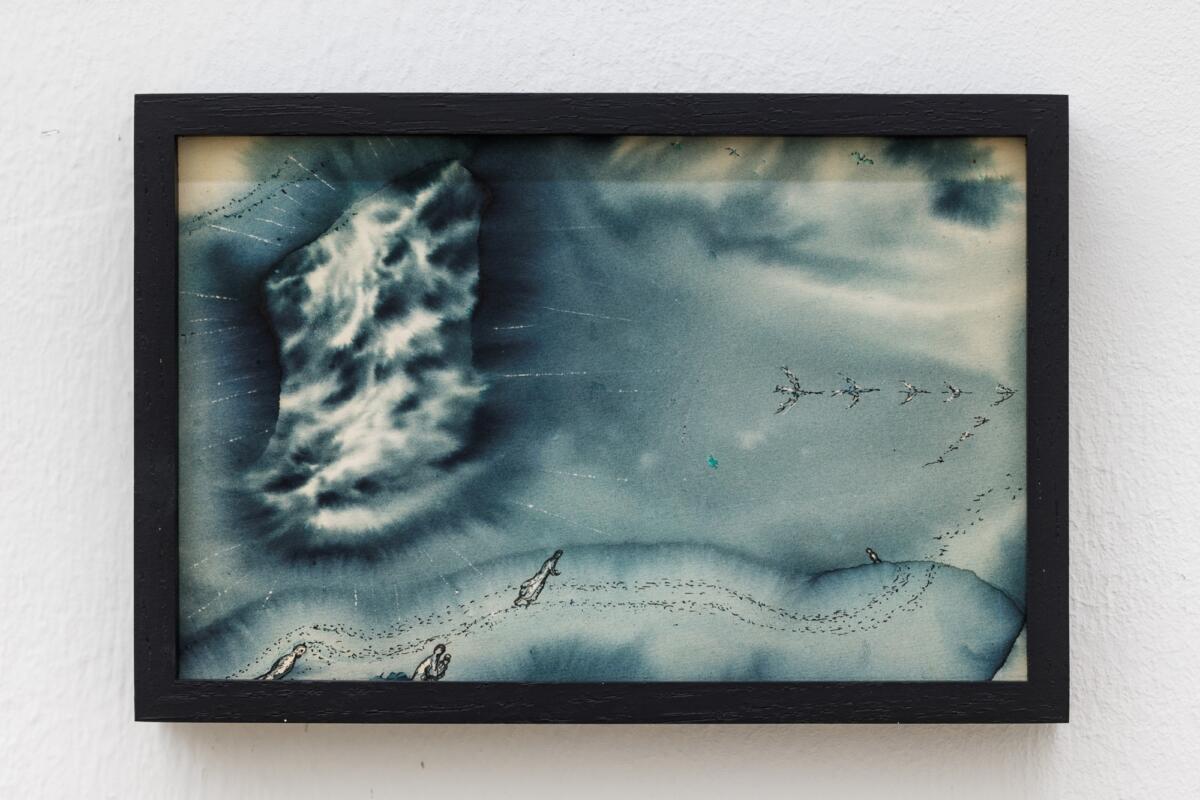
Fedir Tetyanych, "How We Are Born, How We Live, and How We Are Going, Undying to Catch Up with Our Ancestors..", 1980s, paper, watercolor, wooden frame,
12.5x20 cm,
14.5x22x3cm (framed). Courtesy of Croy Nielsen, Vienna and the artist's family.
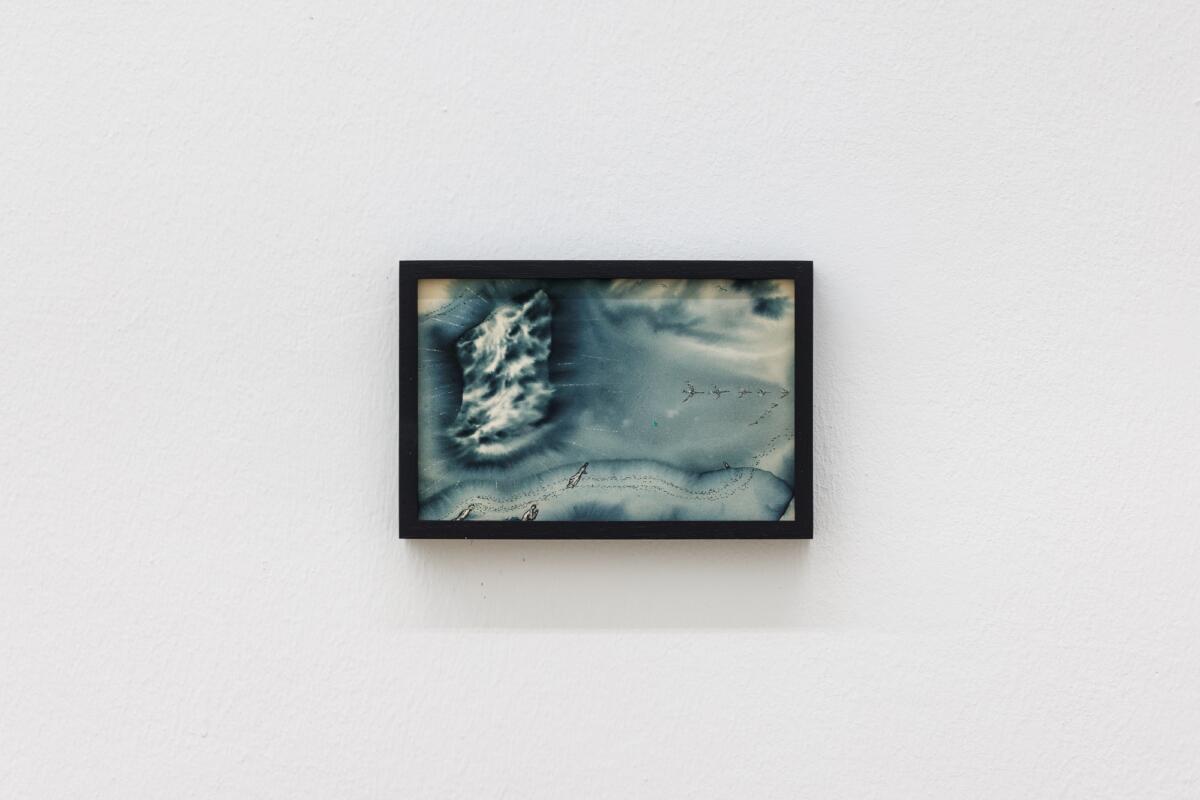
Fedir Tetyanych, "How We Are Born, How We Live, and How We Are Going, Undying to Catch Up with Our Ancestors...", 1980s, paper, watercolor, wooden frame, 12.5x20 cm, 14.5x22x3cm (framed). Courtesy of Croy Nielsen, Vienna and the artist's family.
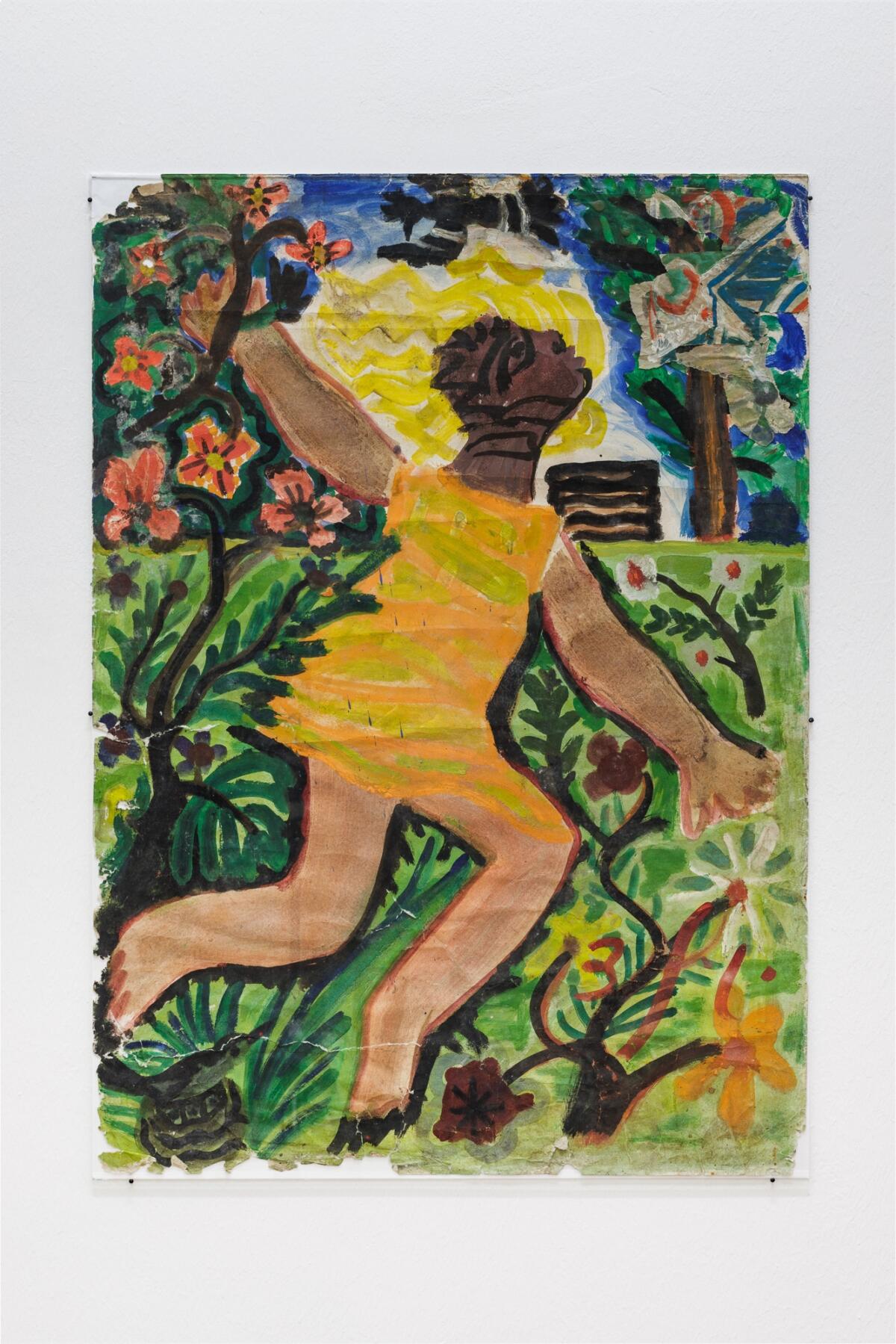
Fedir Tetyanych,
"Marked by the Sun", 1970s, gouache on paper, 86x62 cm. Courtesy of Croy Nielsen, Vienna and the artist's family.
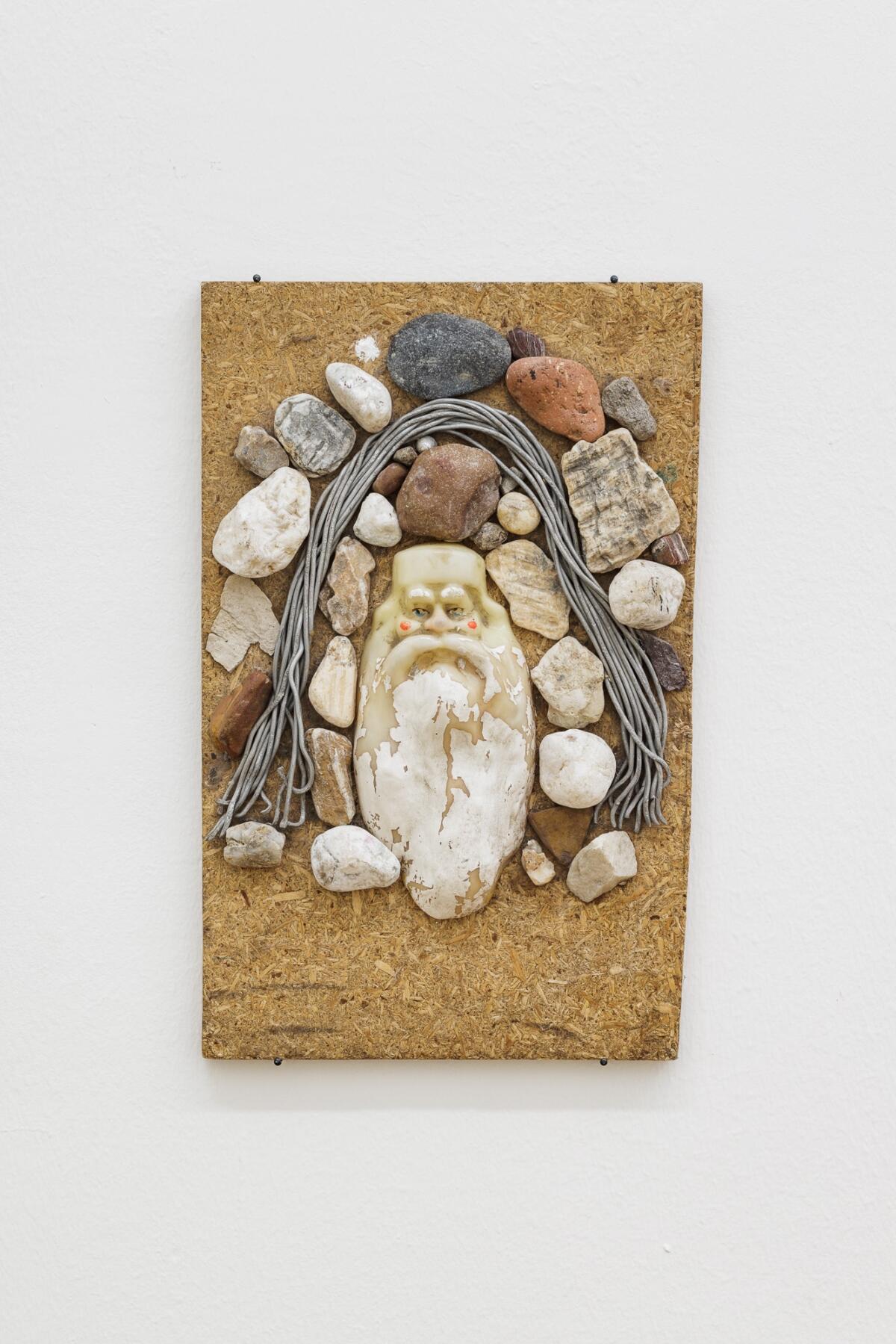
Fedir Tetyanych New Year's Father, 1980s Assemblage of particle board, stones, aluminium wire, plastic
40x25.5x1.5 cm Courtesy of Croy Nielsen, Vienna and the artist's family
In the 1960s, the artist began his first State commissions for monumental decorations in public space, which he often created using found items: discarded industrial waste, scraps of metal, cans, screws and shards of glass. These materials became prime matter for his future costumes and performances on the streets of Kyiv from the 1980s onwards.

Installation view, "The Neverending Eye", Croy Nielsen, Vienna, 2022.
Courtesy of Croy Nielsen, Vienna.

Installation view, "The Neverending Eye", Croy Nielsen, Vienna, 2022.
Courtesy of Croy Nielsen, Vienna. Courtesy of Croy Nielsen, Vienna
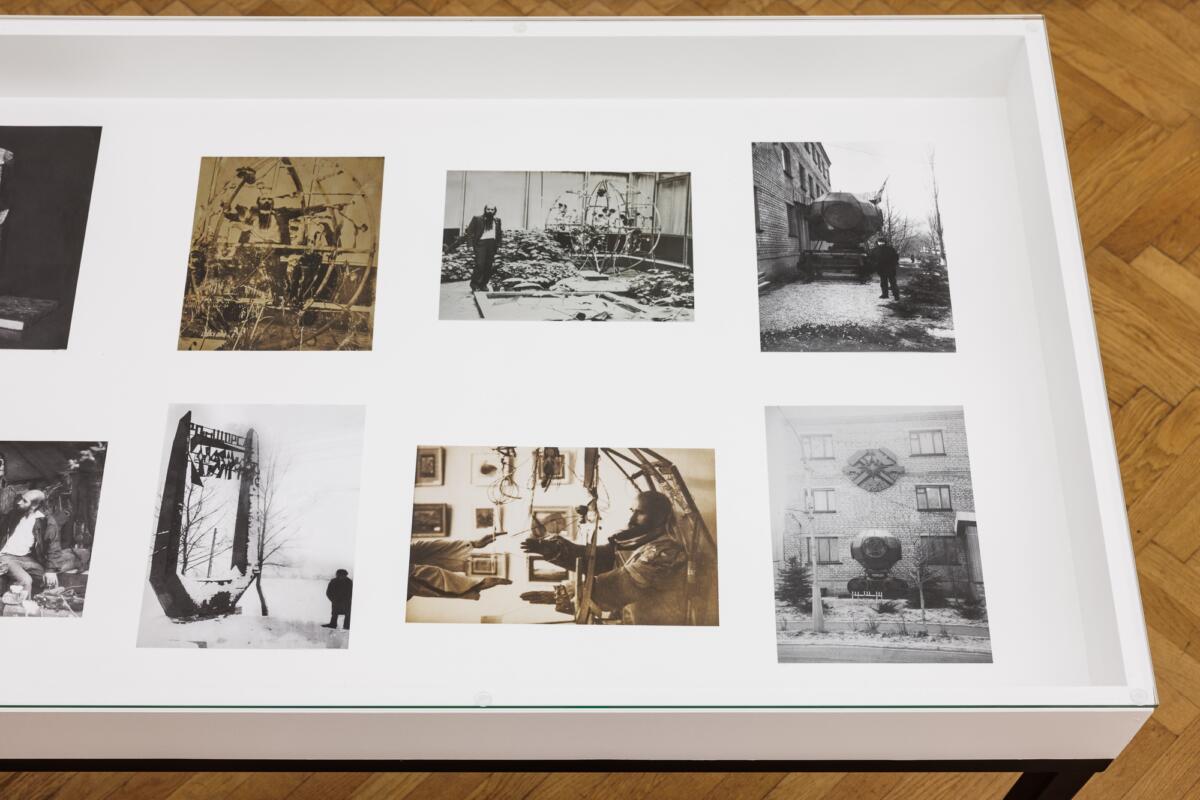
Installation view, "The Neverending Eye", Croy Nielsen, Vienna, 2022.
Courtesy of Croy Nielsen, Vienna.
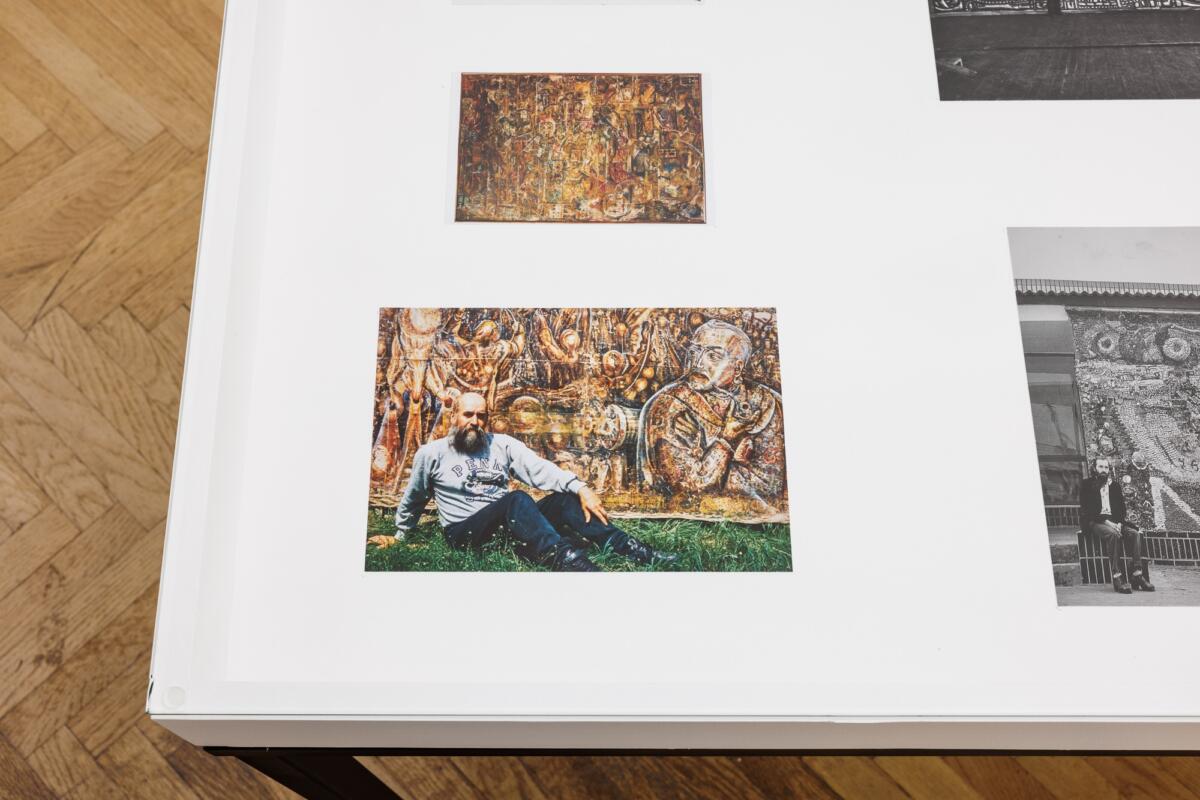
Installation view, "The Neverending Eye", Croy Nielsen, Vienna, 2022.
Courtesy of Croy Nielsen, Vienna.
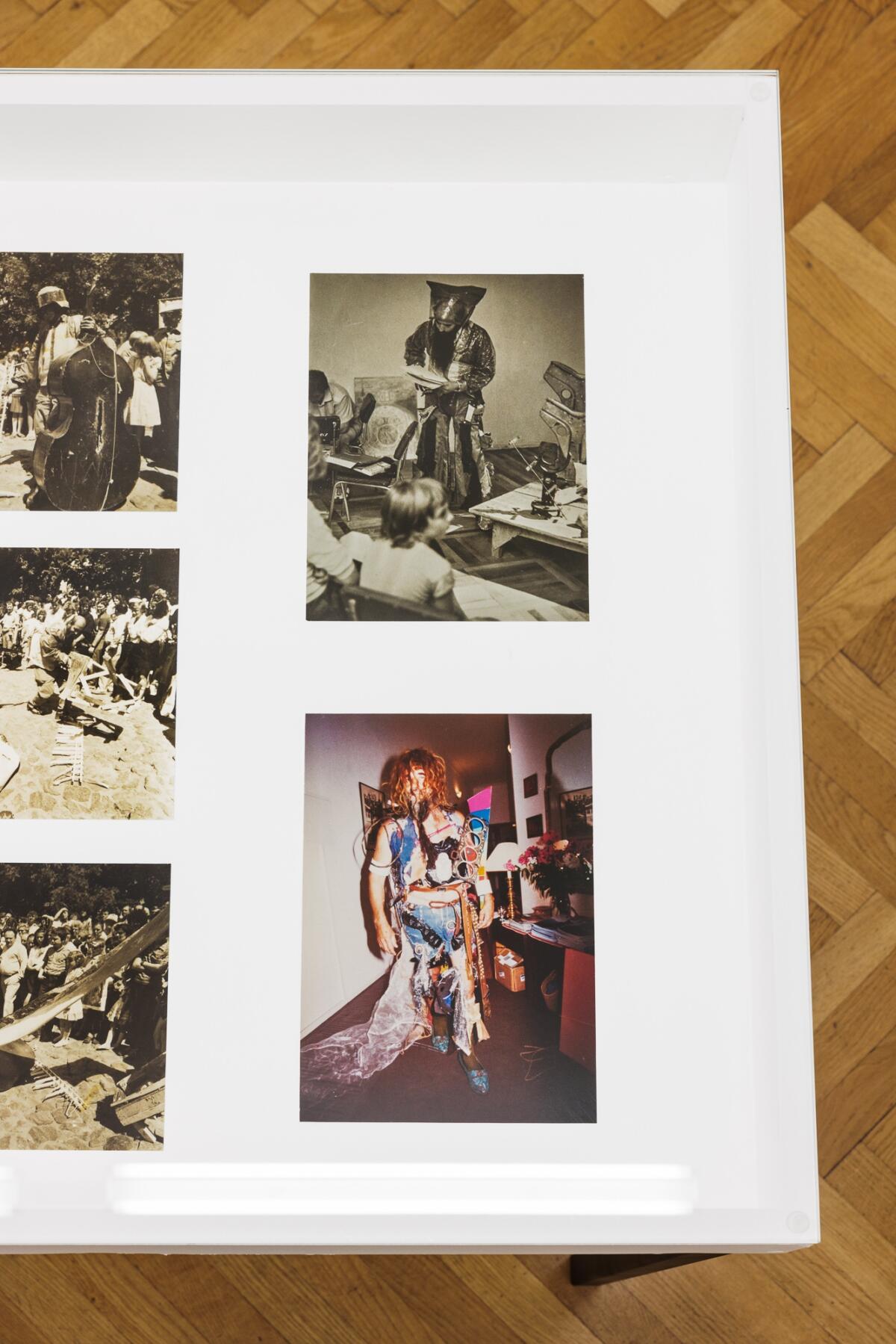
Installation view, "The Neverending Eye", Croy Nielsen, Vienna, 2022.
Courtesy of Croy Nielsen, Vienna.
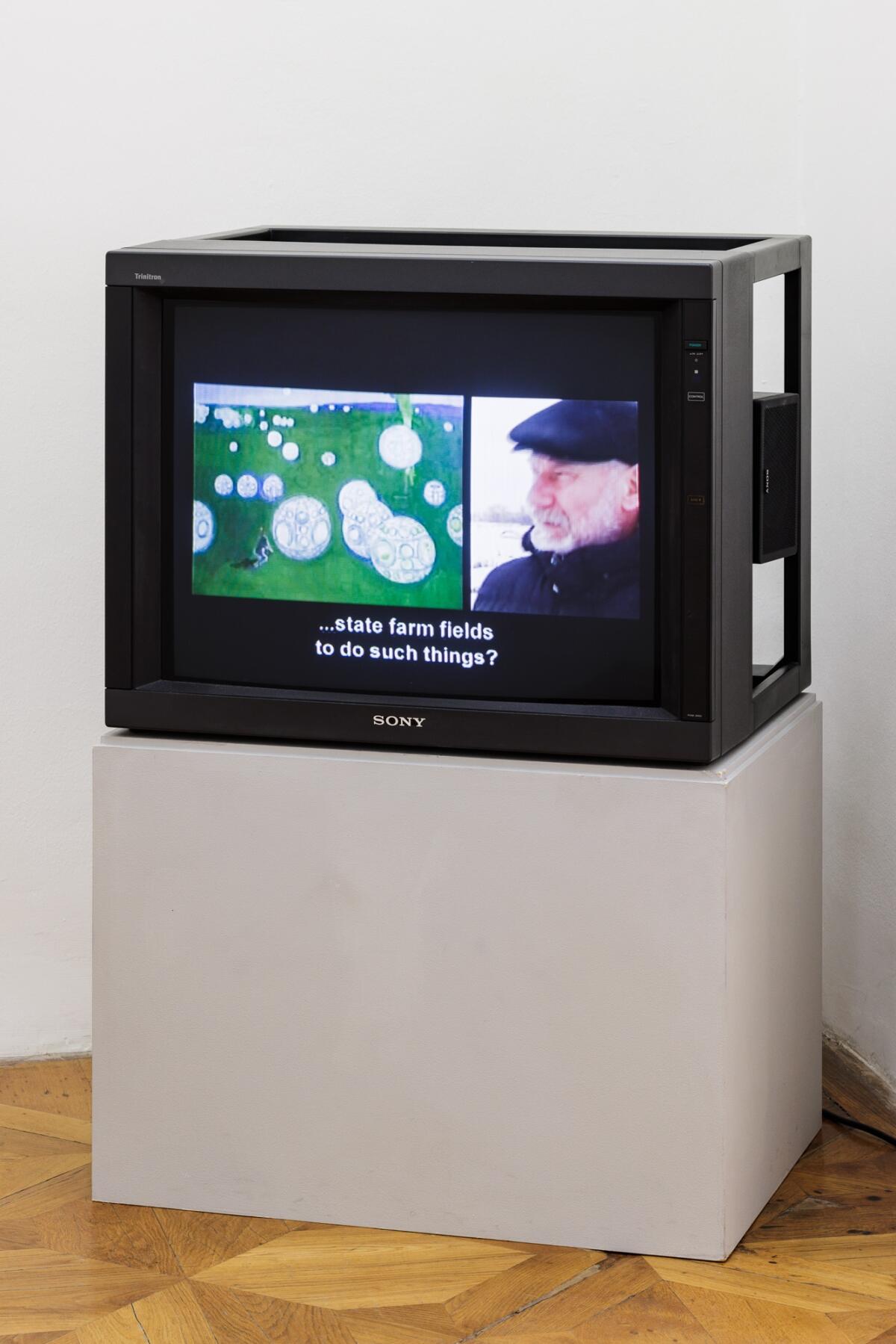
Installation view, "The Neverending Eye", Croy Nielsen, Vienna, 2022.
Courtesy of Croy Nielsen, Vienna.
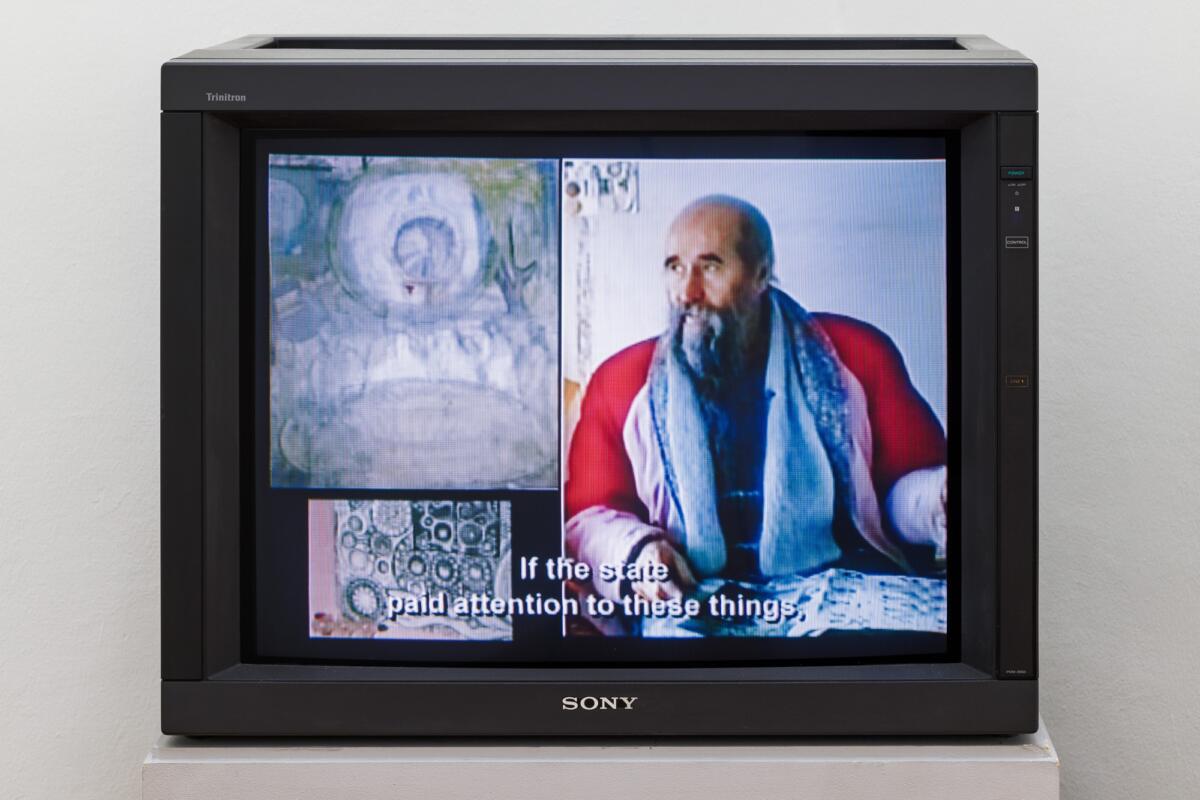
Installation view, "The Neverending Eye", Croy Nielsen, Vienna, 2022.
Courtesy of Croy Nielsen, Vienna.
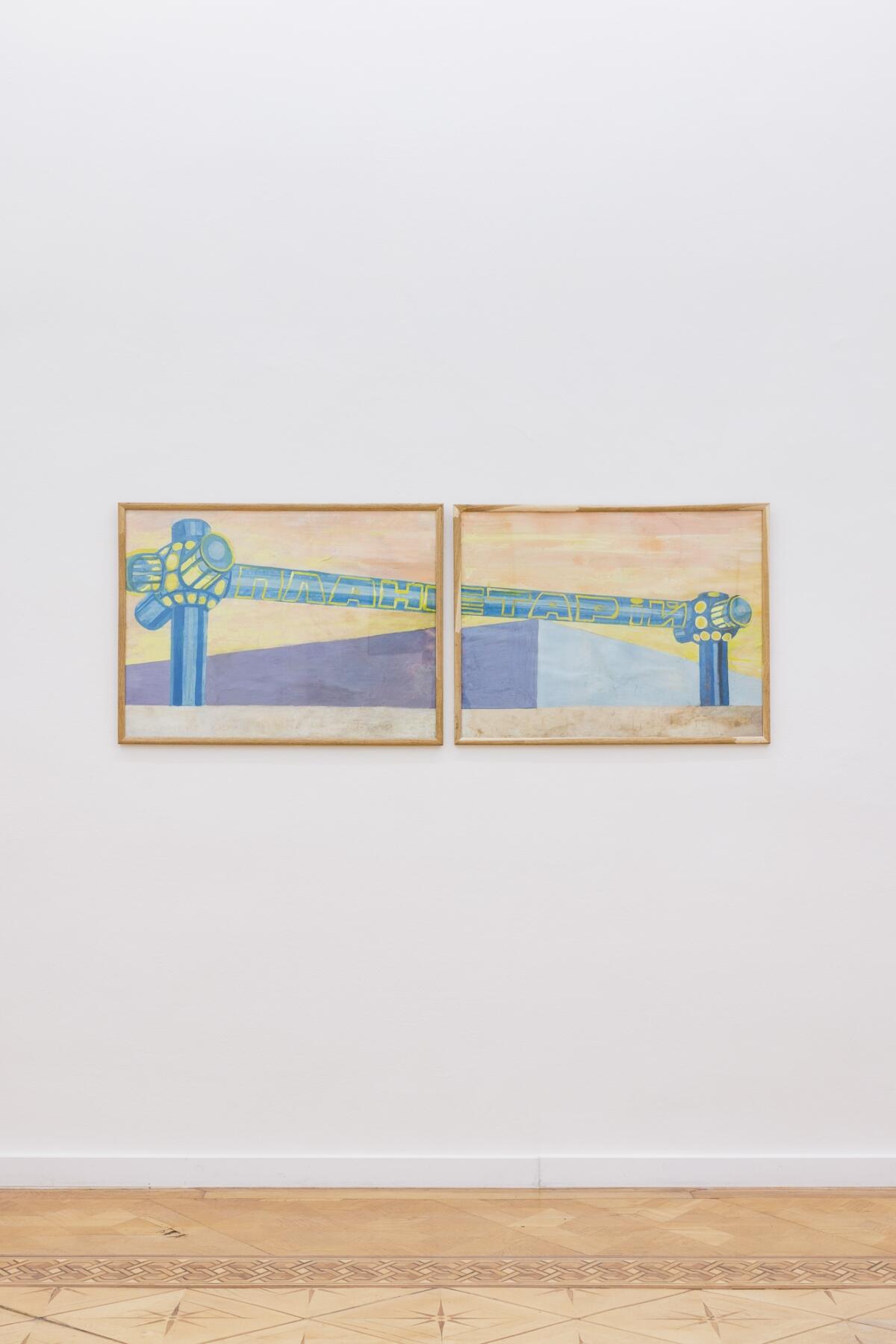
Installation view, "The Neverending Eye", Croy Nielsen, Vienna, 2022.
Courtesy of Croy Nielsen, Vienna.
Tetyanych considered his whole life to be one single performance, but he was more informed by science-fiction literature, cybernetics and cycles of nature than by any of his contemporaries in the field of avant-garde art. In the 1970s, he developed his own version of ecologically-informed cosmism, stemming from an awareness of infinite unity with the universe and mutual interconnectedness, which he called Frypulia. According to him, humanity, even if eventually turned into radio waves or rays of light, would carry information about itself and reappear at any point of space and time. The exhibition pays special attention to Tetyanych’s concept of the biotechnosphere – an autonomous unit for shelter, energy-storage and transportation. The artist made numerous drawings and watercolours imagining their future application, he also installed the actual models in public space; for example, by incorporating them into his State-commissioned monumentalist works. Today, as we witness the rise of fossil-fascism, sowing crisis and military and information warfare, it is uncanny to trace the previous locations of biotechnospheres in Popasna, Peremoga and Kyiv on a map; in many instances, they mirror current sites of brutal military destruction.

Fedir Tetyanych, "Water Competitions", 1980s, paper, watercolor, newspaper clipping, wooden frame,
32 × 33 cm, 43.5 × 41 × 3 cm (framed).
Courtesy of Croy Nielsen, Vienna and the artist's family.

Fedir Tetyanych, "Sketch for Architectural and Artistic Design of Kyiv Planetarium (Fragment of the City of Future)" (diptych), 1988, cardboard, gouache, wooden frame each:
60x80 cm 63x85x1 cm (framed).
Courtesy of Croy Nielsen, Vienna and the artist's family.

Fedir Tetyanych, "Sketch for the Design Project of Kyiv Planetarium", 1980s, cardboard, watercolor, gouache,
61.5x84 cm. Courtesy of Croy Nielsen, Vienna and the artist's family.

Fedir Tetyanych, "Untitled" (Portraits), 1980s, discarded wood, cherry stones, paper, wire, pill blister, clothes pins,
50.5x34x10 cm. Courtesy of Croy Nielsen, Vienna and the artist's family.
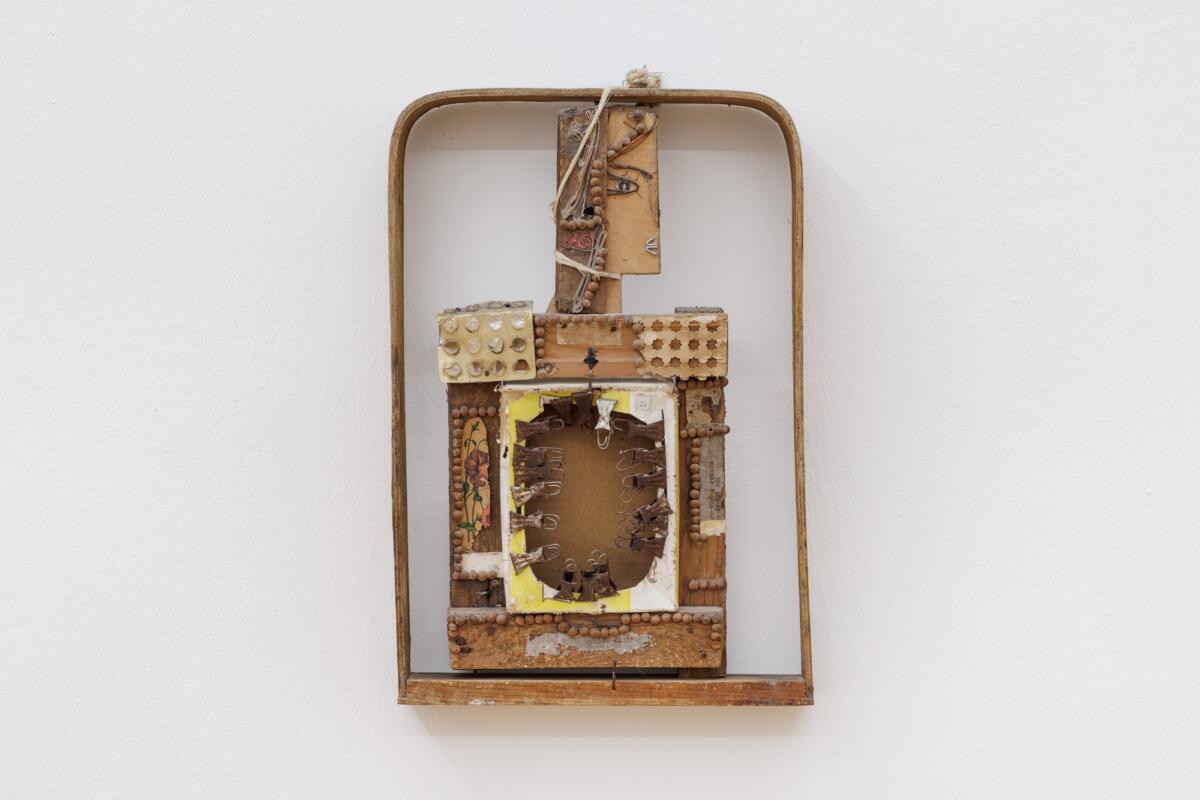
Fedir Tetyanych, "Untitled" (Portraits), 1980s, discarded wood, cherry stones, paper, wire, pill blister, clothes pins,
50.5x34x10 cm. Courtesy of Croy Nielsen, Vienna and the artist's family.
As none of these sculptures survived the past political transformation, and while Ukraine continues to resist the ruthless genocidal and ecocidal Russian invasion, what can we learn from Tetyanych? A radical shift of political imagination and visuality is urgently needed. Tetyanych’s strategy of resistance and political experiment offers us a glimpse into what a project of world-making and healing could mean, but what place does his insubordinate practice occupy in the visual canon of the international avant-garde? Or, indeed, outside it? His future-oriented project reminds us that repair and ethics need to be constantly anticipated, rehearsed and practiced outside of art to produce sustainable results.
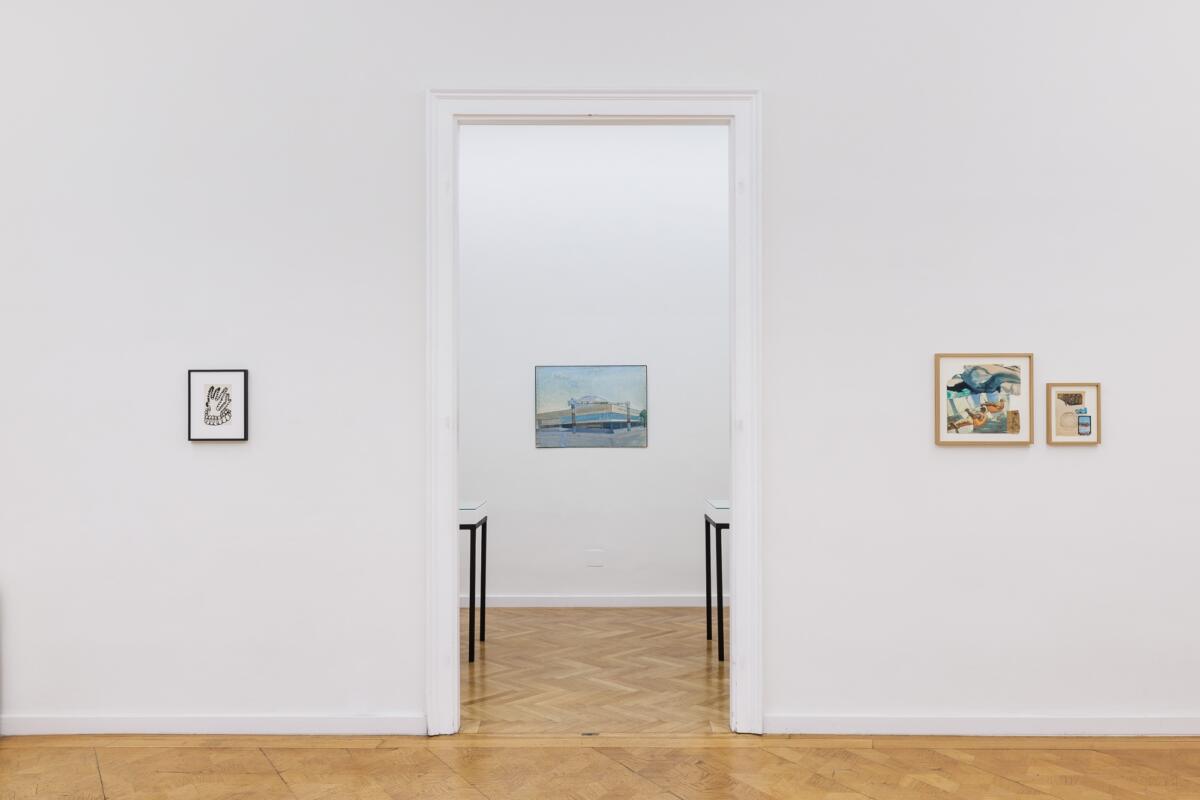
Installation view, "The Neverending Eye", Croy Nielsen, Vienna, 2022. Courtesy of Croy Nielsen, Vienna.
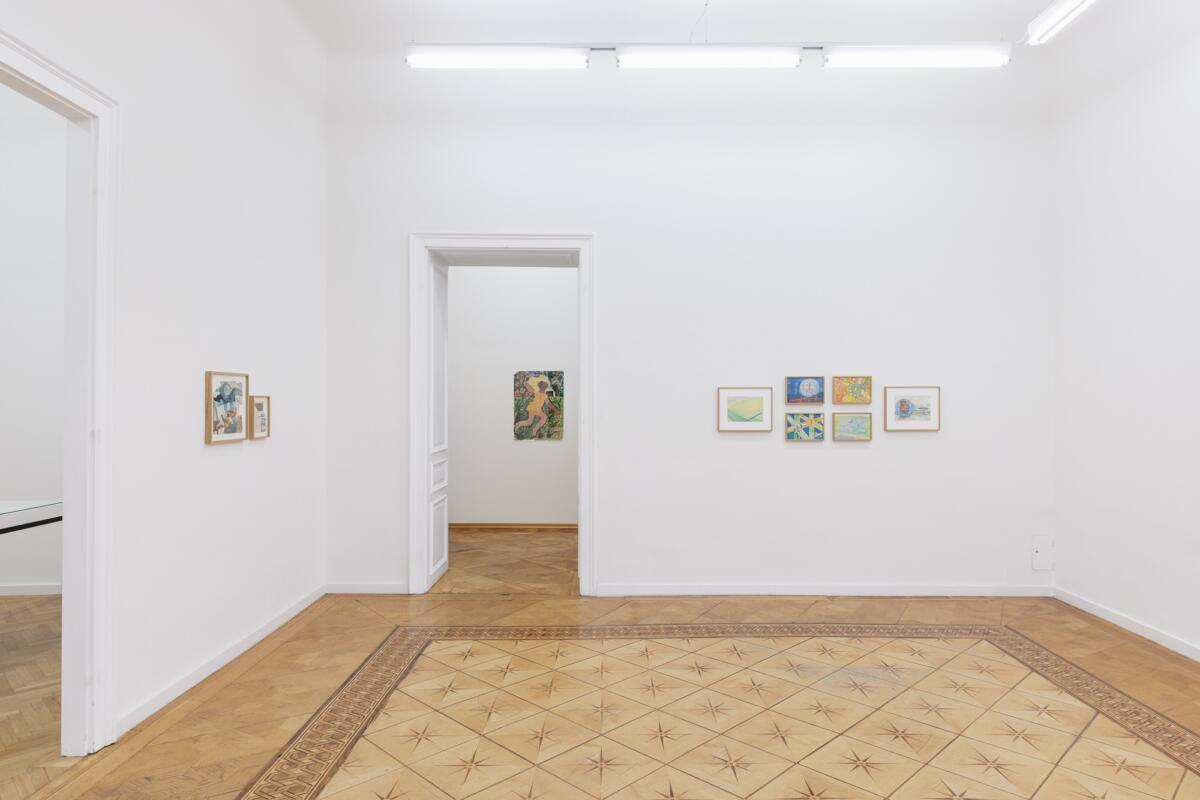
Installation view, "The Neverending Eye", Croy Nielsen, Vienna, 2022. Courtesy of Croy Nielsen, Vienna.
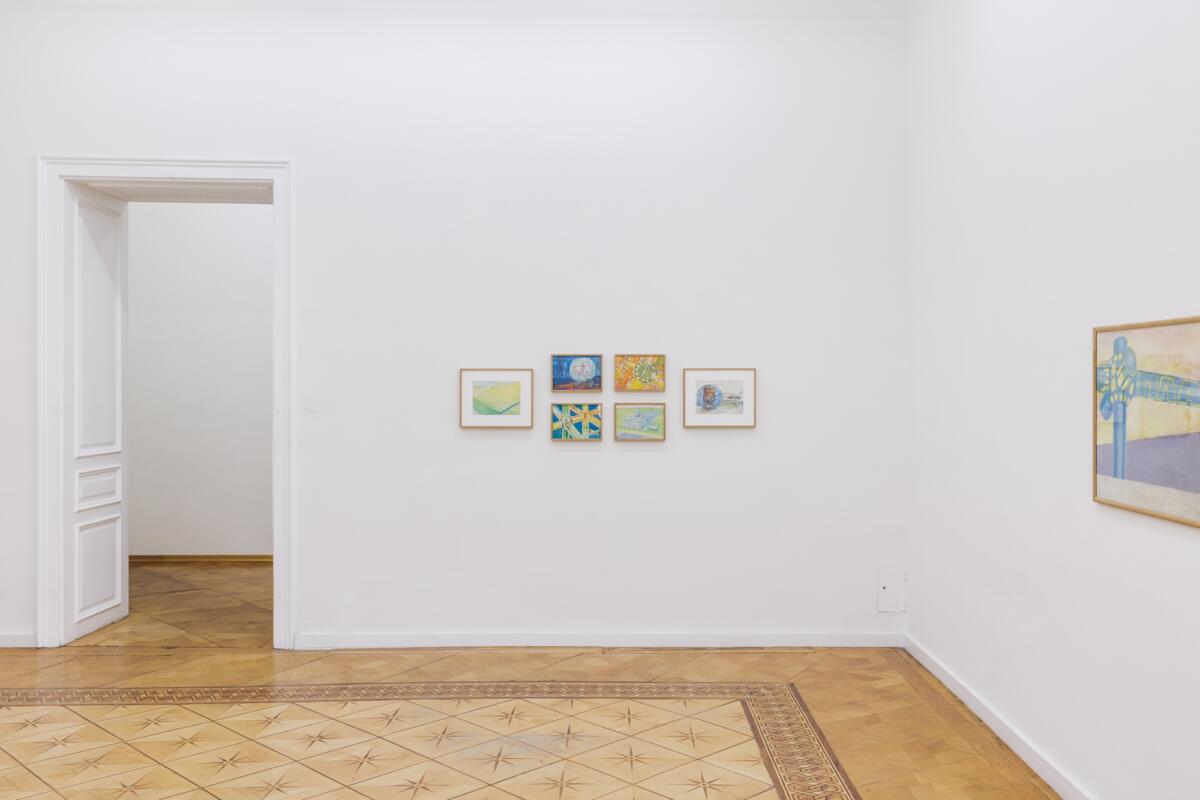
Installation view, "The Neverending Eye", Croy Nielsen, Vienna, 2022. Courtesy of Croy Nielsen, Vienna.

Installation view, "The Neverending Eye", Croy Nielsen, Vienna, 2022. Courtesy of Croy Nielsen, Vienna.
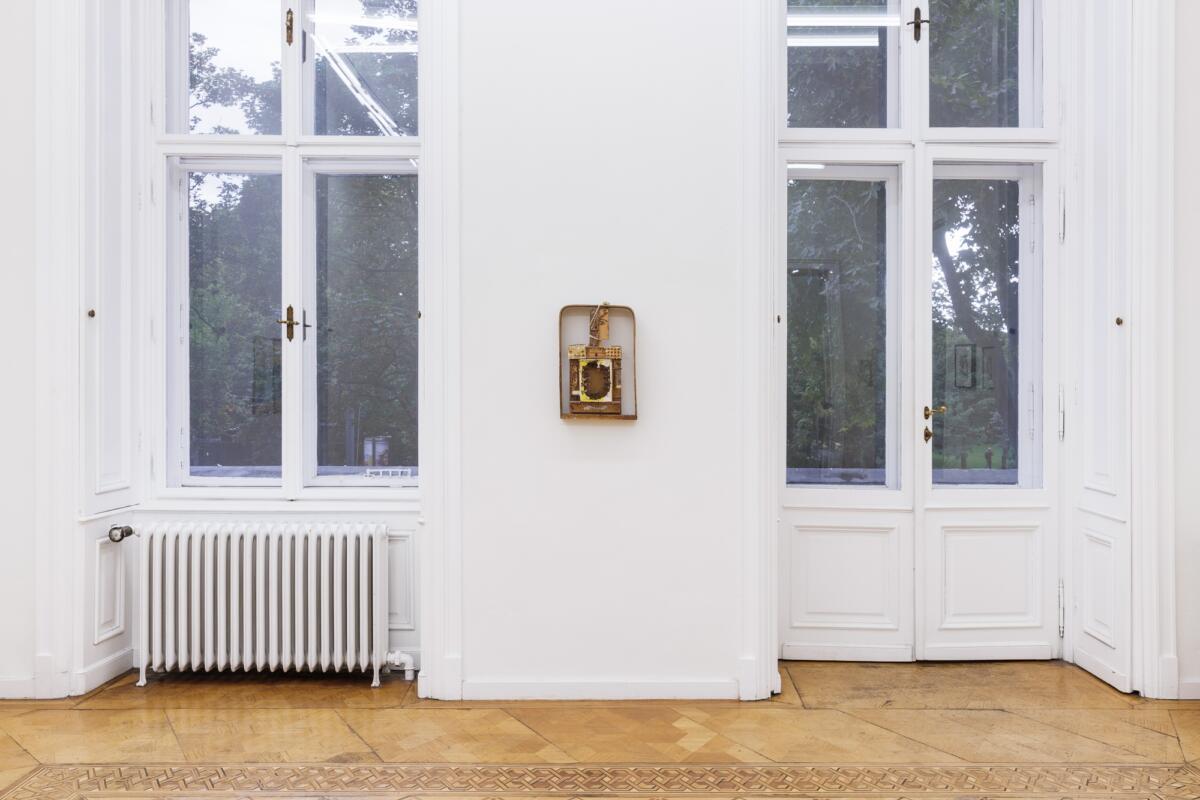
IInstallation view, "The Neverending Eye", Croy Nielsen, Vienna, 2022. Courtesy of Croy Nielsen, Vienna.
The exhibition is curated by Natalia Sielewicz as part of curated by – the gallery festival with international curators in Vienna.
Natalia Sielewicz would like to thank Anna Tetyanych-Bublyk, Bohdan Tetyanych-Bublyk, Lada Tetyanych-Bublyk, Nikita Kadan, Liza German and Anna Potiomkina.



























